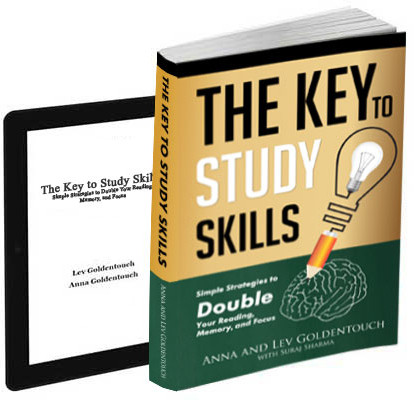Enhancing Text Comprehension in Children
Reading comprehension is a crucial skill that both children and adults continue to develop throughout their lives. However, the challenges children face in comprehending texts often mirror those experienced by adults. As adults, it’s easier to help children improve their comprehension because the texts they read tend to be more straightforward, making it easier to analyze and guide them. However, the key lies in fostering deeper engagement with the text, developing critical thinking skills, and helping children connect their reading to real-life situations.
Understanding the Child’s Mindset
Before diving into practical methods for improving text comprehension, it’s important to understand that reading comprehension is not merely about “reading the words”—it involves active engagement with the text. The goal is to ensure that children do not just decode the words but also absorb, reflect on, and critically evaluate the material. By understanding the cognitive processes at play, parents and educators can guide children more effectively through the reading process.
Many children struggle with text comprehension because they have not yet developed the ability to identify the core ideas of a text, distinguish between main ideas and details, or engage critically with the content. With time, these skills can be developed through regular practice and targeted exercises. To help, we can ask children questions that challenge their understanding and encourage active reading.
Effective Questioning for Comprehension
A great way to guide children towards better comprehension is to ask the right questions as they read. Here are some strategic questions that can aid in improving reading comprehension:
- Identifying Key Words and Concepts:
“What are the repeating words or groups of words in this text? Which words seem important?”
Repeating words or phrases in a text is often central to its theme or message. Identifying these can help children focus on the primary ideas. - Paragraph Analysis:
“What are the specific markers of each paragraph?”
These markers could be key terms or phrases that distinguish each paragraph. Understanding these markers helps children grasp the structure and flow of the argument presented in the text. - Author’s Purpose:
“What is the author trying to show or convey? Is there a hidden message or intention behind the text?”
This question encourages children to think critically about the author’s objectives, beyond just the literal meaning of the words. - Personal Reflection:
“What is your own perspective on the material you just read?”
Encouraging children to express their thoughts and feelings about the text makes them more active participants in the reading process.
Practical Tasks to Test Text Comprehension
In addition to asking questions, specific tasks can be used to test the depth of a child’s understanding. These exercises not only enhance their comprehension skills but also develop critical thinking.
- Summarizing Key Points:
Ask the child to read a paragraph and then select three key groups of three words from each paragraph that summarize its main idea. The goal is to determine whether these words truly represent the essence of the paragraph. Do they offer a general idea, or are they specific details? What might be missing, and can you select better words? - Restating in Their Own Words:
Encourage the child to explain what the text is about in their own words. Afterward, have them reread the passage to check if they missed any important information. This will help them identify any gaps in understanding and allow them to focus on key concepts they might have overlooked the first time. - Identifying Interest and Relevance:
Ask, “Why is this text interesting? How could it be relevant to your life?”
Understanding how the text connects to real-world scenarios helps children see the value in what they read, making it more engaging and meaningful. - Engaging with Arguments and Examples:
“What arguments and examples did the author provide? Could you think of better arguments or examples to support the text’s ideas?”
This critical task helps children develop their reasoning and argumentation skills, allowing them to evaluate and improve the author’s points. - Improving the Text:
“Do you have any questions or objections not covered by the author? How would you improve the text?”
This exercise encourages creativity and allows children to reflect on the text’s strengths and weaknesses, fostering a deeper understanding of the material.
Repetition and Reflection for Mastery
To ensure full comprehension, it’s important to practice revisiting and reflecting on the text multiple times. Here is an excellent exercise that helps in this process:
- Initial Understanding:
After reading the text once, write down everything you understood. This helps the child focus on extracting meaning without distractions. - Comparison and Reflection:
Read the text again, comparing the new information with what was written down initially. What did you miss? What new details can you add? This second pass allows children to fill in gaps in understanding and retain more information. - Rewriting and Refining:
Continue this process until an impartial observer cannot detect anything missing. This repetition helps reinforce memory and solidifies comprehension.
Finally, it’s important to evaluate personal biases. Did the child read all parts of the text with equal attention? Did they skip names and numbers, and why? Were they more focused on the general idea or the specific examples? This self-awareness can significantly improve their ability to understand and retain information.
Challenges and Strategies for Improvement
Reading comprehension exercises can sometimes face resistance, especially when working with children. You may hear complaints like, “This is boring,” or “I don’t understand anything.” These are common reactions, but persistence is key. It’s important to celebrate the small successes and gradually build a child’s confidence and interest in reading. Over time, the more they practice, the more they will improve.
Remember, reading comprehension isn’t just a skill for school; it’s a lifelong ability that can be honed and developed at any age. In fact, you can even enhance your reading comprehension through various resources and techniques, such as speed-reading strategies.
If you’re interested in diving deeper into these methods, I highly recommend checking out my Speed Reading Premium Bundle for practical tips and exercises that can speed up the process.
Personalized Approaches for Individual Growth
Every child is unique, and what works for one may not work for another. As a parent or teacher, it’s crucial to adapt strategies to the child’s needs. For example, some children might benefit from visual aids, such as mind maps or graphic organizers, which help them see the relationships between different concepts and ideas. Others may benefit from mnemonic devices or memory techniques, such as the Memory Palace method, which you can explore here.
Conclusion: The Journey to Better Comprehension
In conclusion, improving text comprehension in children is not an overnight task—it’s a gradual process that requires patience, practice, and consistency. By using effective questioning techniques, engaging children with practical tasks, and encouraging repeated reflection, you can significantly boost their understanding of the text. It’s important to stay supportive and help them see the value in reading by connecting the material to their everyday lives. Remember, children may resist at first, but with time, they will become better readers—and possibly even better than you!
For further reading and detailed techniques, you can check out my book on Amazon, available here. Also, feel free to join the community at Key to Study on Facebook, where we discuss strategies for improving reading and comprehension skills regularly.
For more information and tips on reimagining your approach to learning and reading, visit this article.

Get 4 Free Sample Chapters of the Key To Study Book
Get access to advanced training, and a selection of free apps to train your reading speed and visual memory

